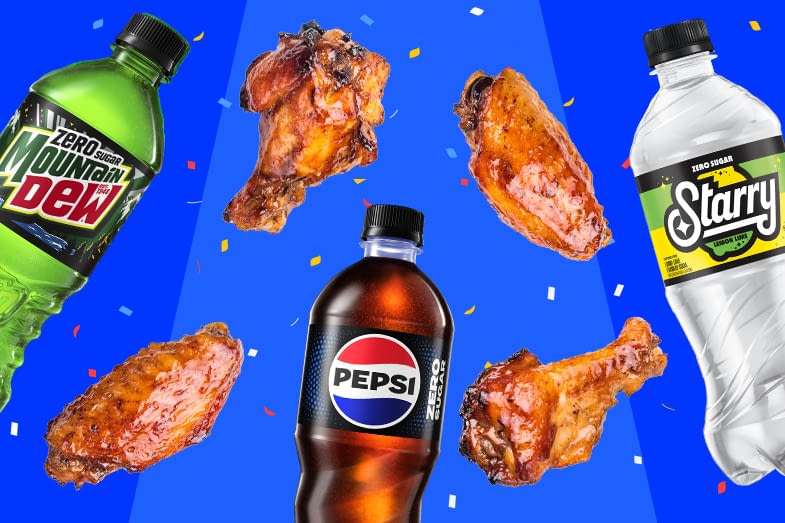I n foodservice, every ingredient has a job to do—but the smartest ones can wear more than one hat. Today’s operators face mounting pressure from inflation and shifting diner expectations1, and in this environment, ingredients that can adapt across dayparts, menu applications, and formats aren’t just convenient, they’re critical. During the pandemic, operators were forced to strip menus down to the essentials as supply chain issues and labor shortages hit. Fast forward to today, and menus are growing again. In fact, across almost all segments menu sizes have exceeded pre-pandemic levels.1 Yet, while menu expansion is surging, the operational lessons of the pandemic remain, and ingredient versatility (doing more with fewer SKUs) continues to be a top priority.
Bold flavor, fewer SKUs
Instead of adding SKUs that only solve for one menu need, operators are turning to versatile ingredients that can do double, or even triple duty. It’s not just about cost savings; it’s also about giving chefs more freedom to innovate without overcomplicating the back of house. With rising costs adding pressure, versatility matters even more. Nearly 9 in 10 operators say cross-utilization potential is a decisive factor when adopting new products.2 The message is clear: growth is essential, but efficiency is what makes growth sustainable.
The ingredients that keep menus flexible
Consumer tastes are moving fast, so operators need ingredients that can pivot quickly. Those seeking to innovate their menu without adding SKUs to their pantry can look to PepsiCo’s portfolio for inspiration on smart pairings and profitable promotions. We’ve seen operators win by building out menus with ingredients that adapt to multiple formats, then amplifying them with beverage pairings that drive check size. Here are a few ways you can lean on the PepsiCo portfolio to get innovative with your ingredients.

Soda isn’t just for sipping
Soda doesn’t need to be limited to the beverage fountain. Carbonated soft drinks can add unexpected depth and sweetness to sauces, marinades, and glazes—turning everyday dishes into memorable flavor experiences. This ties directly into the trend of “newstalgia”: the reimagining of classic, familiar flavors in fresh, modern ways. Younger diners like Gen Z and Gen Alpha, in particular, want exciting food experiences that both excite the palate and tell a story.3
The same adventurous spirit that fueled the “swicy” (sweet + spicy) trend is now driving demand for smoky, charred, and warming flavors. Within this space, soda syrups unlock opportunities to add sweetness and complexity that enhance both savory and spicy blends. It’s already catching on: soda-based sauces are showing up everywhere on menus, bridging nostalgia with bold new flavor exploration.4
Fizzy opportunities include:
Pepsi® or Mountain Dew®-infused BBQ sauces
Starry® citrus-forward marinades for proteins
Branded, menu-highlighted sauces featuring PepsiCo beverages

Crunch that counts
PepsiCo’s snack portfolio also proves that versatility doesn’t have to sacrifice craveability. Chips aren’t just sides anymore—they can be transformed into garnishes, coatings, or textural elements that bring excitement across the menu. Texture has always been an integral part of craveable food, but it’s now stepping into the spotlight as a social-media-worthy feature.5 Videos of TikTok creators biting into crunchy foods with amplified sound effects are going viral, tapping into the platform’s obsession with ASMR or “autonomous sensory meridian response”—the tingly sensation some people experience when they hear certain sounds.5
Consumers are embracing multi-sensory dining,5 and operators and brands are responding by spotlighting crunch and crispiness, opening the door for chips to shine as a versatile, textural element across menus.
Crunchy opportunities include:
Salad or bowl topping: Replace traditional crunchy elements like croutons with flavored chips
Sandwich enhancer: add crunchy layers to burgers, crispy chicken sandwiches, or deli sandwiches
Protein coating: use crushed chips as a breading for crispy chicken, fish, or plant-based ingredients
Garnish: add crunch to soups or chilis, or get creative with pizzas, tacos, and more
The future is adaptable
At the end of the day, diners don’t care if an ingredient is doing double duty—they just care if it tastes great. Versatile ingredients allow operators to meet consumer cravings, manage food costs, and deliver memorable dining experiences without compromise. It’s a rare strategy where operators, staff, and guests all walk away winning. From streamlining execution to fueling creativity, PepsiCo Partners makes it simple to put versatility into action, and keep guests coming back for more.
Sources
1 Datassential State of the Menu February 2025
2 Datassential MidYear Trends 2024 August 2024
3 Institute of Food Technologists, Outlook 2025: Flavor Trends, September 2024
4 Datassential Dipping Sauces Menu Adoption Curve March 2025
5 Restaurant Business Online, Texture is trending on menus as consumers seek multi-sensory eating experiences, March 2025

